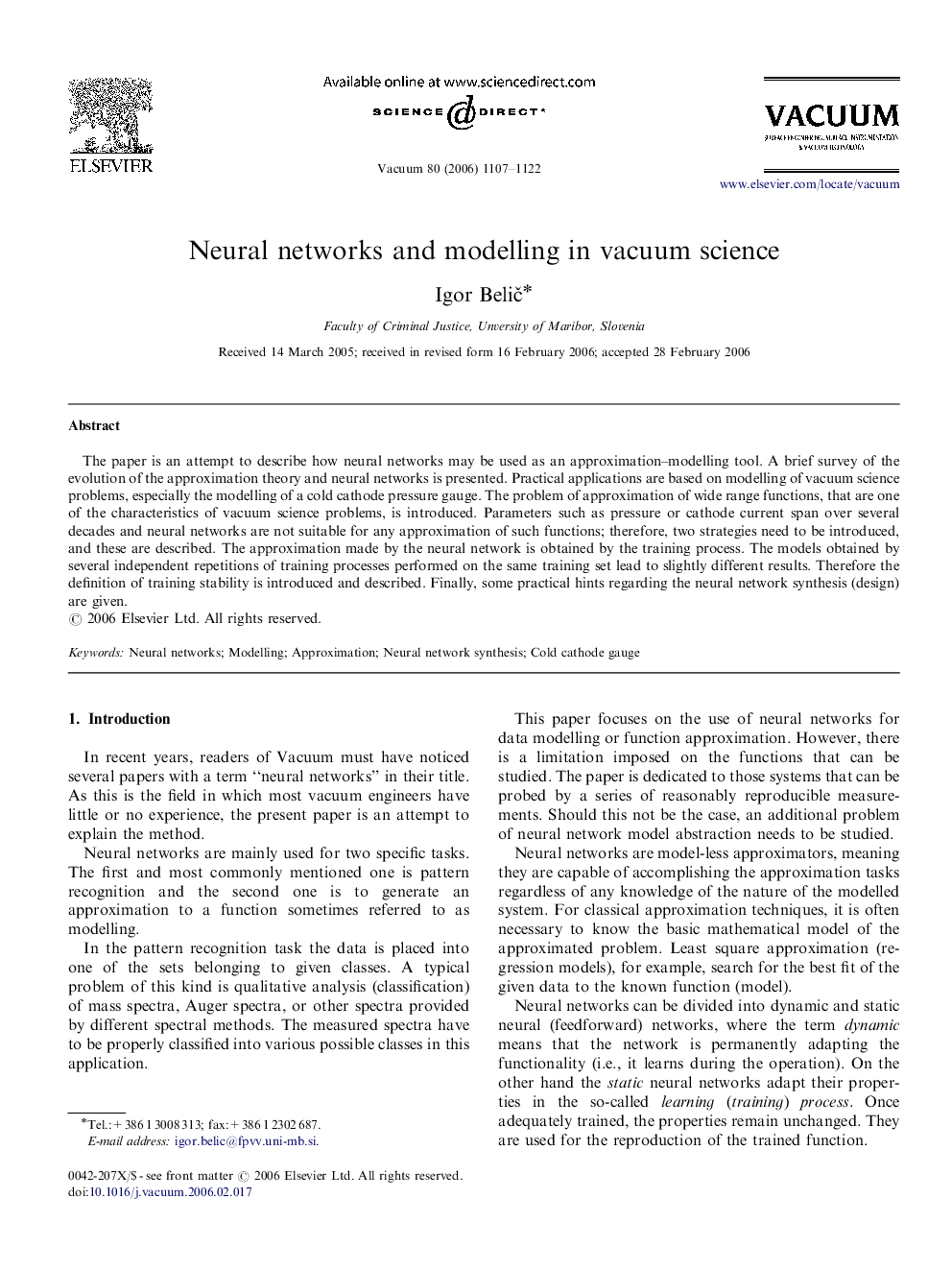| Article ID | Journal | Published Year | Pages | File Type |
|---|---|---|---|---|
| 1691681 | Vacuum | 2006 | 16 Pages |
Abstract
The paper is an attempt to describe how neural networks may be used as an approximation-modelling tool. A brief survey of the evolution of the approximation theory and neural networks is presented. Practical applications are based on modelling of vacuum science problems, especially the modelling of a cold cathode pressure gauge. The problem of approximation of wide range functions, that are one of the characteristics of vacuum science problems, is introduced. Parameters such as pressure or cathode current span over several decades and neural networks are not suitable for any approximation of such functions; therefore, two strategies need to be introduced, and these are described. The approximation made by the neural network is obtained by the training process. The models obtained by several independent repetitions of training processes performed on the same training set lead to slightly different results. Therefore the definition of training stability is introduced and described. Finally, some practical hints regarding the neural network synthesis (design) are given.
Related Topics
Physical Sciences and Engineering
Materials Science
Surfaces, Coatings and Films
Authors
Igor BeliÄ,
